
Who Is On Canadian Money?
The images and people displayed on currency are often used as a way to celebrate the great contributions a nation has made as well as highlight some of their most important and impactful citizens who have stood out in history. Canada is no different in this regard.
Canadian currency comes in all different shapes and sizes and has various types of bills and coins that are no longer in circulation. That being said, the faces and symbols that existed on both the plastic bills and metal coins have remained nearly unchanged for more than 50 years, with a few notable exceptions.
Canadian bills are color-coordinated, with each color signaling the bill's value at a glance.
- Blue - $5
- Purple - $10
- Green - $20
- Red - $50
- Brown - $100
Sir Wilfrid Laurier - 5 Dollar Bill
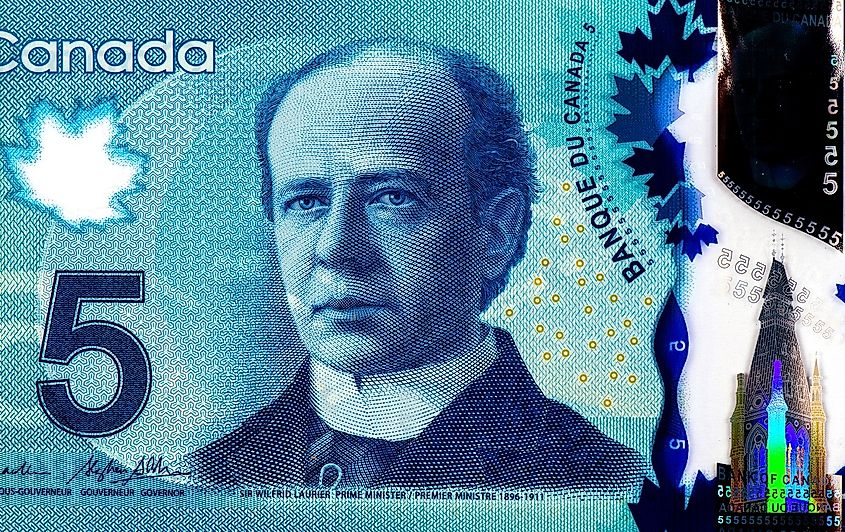
One of the most important Prime Ministers in Canadian history, Sir Wilfrid Laurier, is often regarded as the man responsible for forging modern Canada. Born in 1841 to a French-speaking family, Laurier grew up in relative comfort and pursued an education in law at McGill University in his late adolescence.
After he graduated, he became a lawyer, but only for a short time. In only a few years, he found himself at the head of a newspaper called Le Défricheur. At the time, he rallied against the idea of Canadian confederation in fear that an English-majority nation would dominate and inevitably subjugate the French minority living primarily in Quebec.
In 1874, he ran for a seat in Parliament with the Liberal Party of Canada and won handily. He would go on to hold on to his seat for 45 years straight. In 1887, he was elected head of the party and ran on a platform of national unity between the French and English-speaking populations. While both sides distrusted Laurier early on, he was eventually able to win them over and was elected prime minister in 1896.
Laurier's time as leader of Canada was nothing short of transformational. He oversaw the completion of the ambitious and expensive Transcontinental Railway that connected both Western and Eastern Canada. He would also usher in the addition of Alberta and Saskatchewan as provinces. This was also the time when Canada would begin to industrialize and move away from its agrarian roots.
Today, Laurier is often celebrated as a peacemaker who was able to bridge the divide between English and French Canadians while also taking meaningful and tangible steps into forging what we now recognize as modern Canada.
Sir John A. MacDonald / Viola Desmond - 10 Dollar Bill
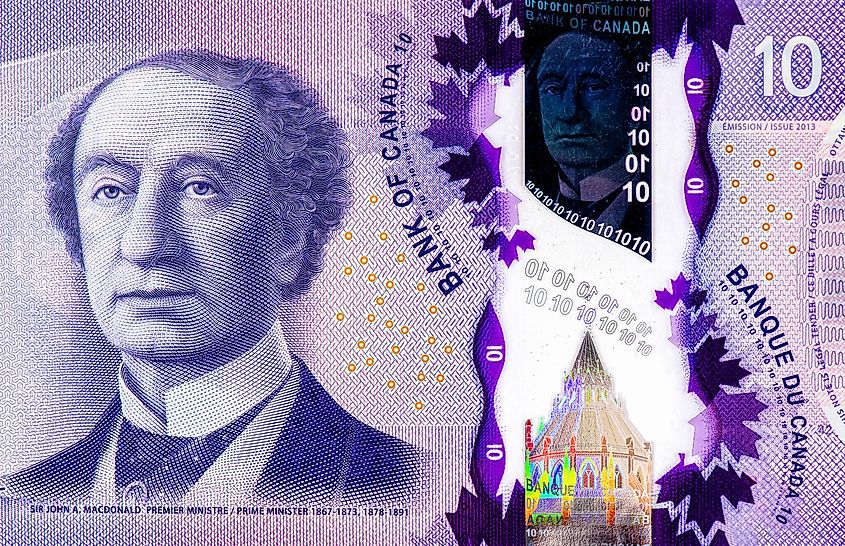
John MacDonald was born in Glasgow, Scotland, in 1815 and immigrated to the Canadian colonies when he was five years old. His father was a successful businessman, which allowed him to get a high-quality private education when he was young.
He took full advantage of his schooling and was sent to Kingston, Ontario when he was 15 to serve under the tutelage of a local lawyer. When he was 19, he opened his own law office and ran it by himself. His first high-profile case was in 1838 when he defended a leader of a rebel group who had launched a series of raids from the United States into Canadian territory. This was deeply unpopular amongst the Canadian public, but his passionate defense and professionalism were respected by all involved.
MacDonald entered into politics not long after and was eventually elected to the Legislative Assembly of the Province of Canada in 1844. His political influence would only grow until he became one of the leading voices in Canadian politics by the 1860s. A strong advocate for the union of all Canadian provinces into one dominion, MacDonald finally got his dream fulfilled when, in 1867, the provinces of Ontario, Quebec, New Brunswick, and Nova Scotia joined the Confederation of Canada.
MacDonald became the first Prime Minister of Canada on June 1st, 1867, and was knighted for his accomplishments. His time at the helm of the newfound nation was characterized by swift expansion with the incorporation of other British colonies such as British Columbia, Manitoba, Prince Edward Island, and the Northwest Territories (Alberta and Saskatchewan).
Today, MacDonald is somewhat of a controversial figure. While he is certainly celebrated for founding the Canadian nation, he also faces heavy criticism for his general attitudes towards Indigenous Canadians and the establishment of residential schools. His checkered past has resulted in the introduction of a second $10 bill that features the face of Viola Desmond, a previously lesser-known and overlooked civil rights leader in Canadian history.
Queen Elizabeth II - 20 Dollar Bill
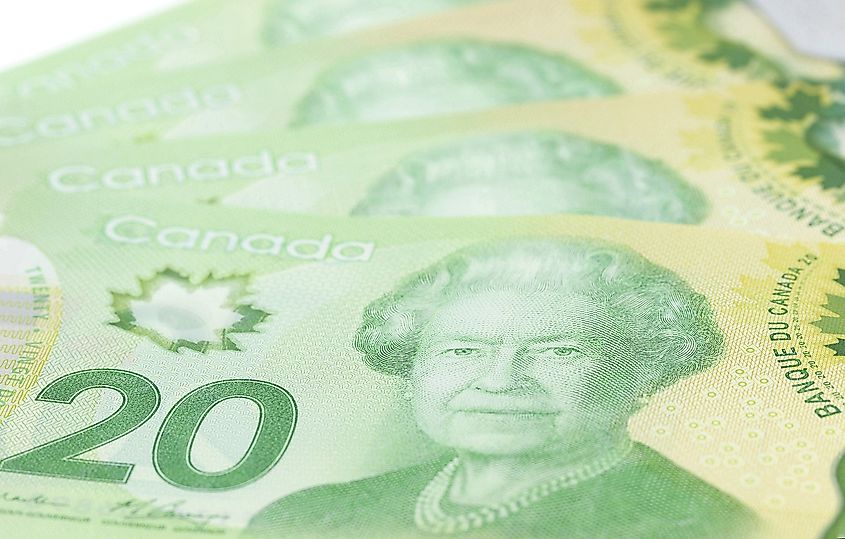
The British monarchy has always played a central role in Canadian identity. Ever since Queen Elizabeth II ascended to the throne in 1952, she has been displayed with pride in Canadian currency. Not only is she on the 20-dollar bill, but she is also on the back of every coin.
Canada is still an active member of the British Commonwealth. As a matter of fact, the reigning British monarch is still technically the head of state of Canada. While this is, of course, nothing more than a formality and a nod to the role Britain has played in the formation and settlement of Canada, it still goes to show how much influence this institution has had in the nation for much of its history.
Queen Elizabeth II was one of the longest-reigning monarchs in recorded history and made many visits to Canada throughout her life. While she might not have wielded much real political power, her signing and approval of the 1984 Canadian Charter of Rights and Freedoms officially marked the beginning of an independent Canada. This was certainly one of the most important moments in the nation's history.
Elizabeth died at the old age of 96 in 2022. With her passing and as announced by the Canadian government at the coronation of her son, a new 20-dollar note features King Charles III as the portrait subject.
William Lyon Mackenzie King / Mark Terry - 50 Dollar Bill
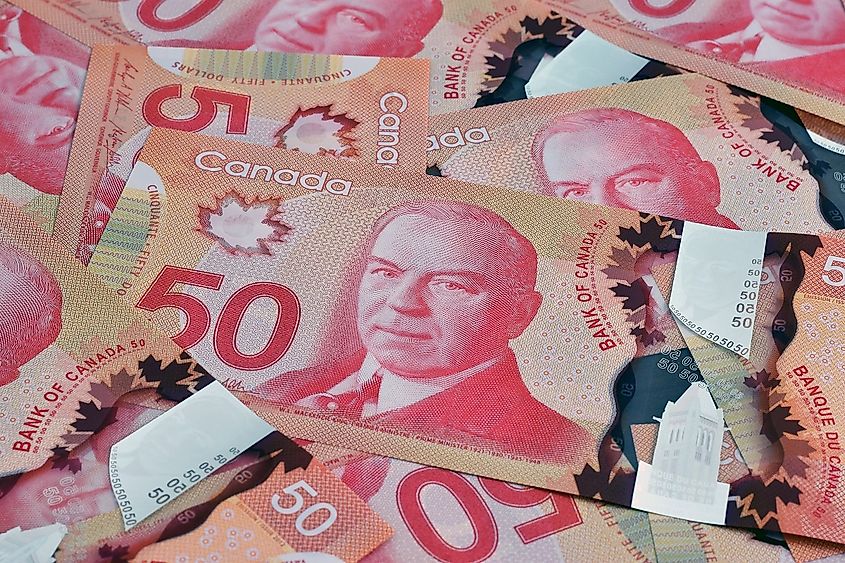
William Lyon Mackenzie King was born in 1874 in Kingston, Ontario. His father, John, was a practicing lawyer and instilled in him the importance of receiving a good education at an early age. A young William King was sent to some of the best schools available and eventually enrolled at the University of Toronto in 1891, where he studied law and economics.
During his time as a student, he was a regular contributor to newspapers such as the Toronto Globe and the Mail and Empire. Politics was something that had always fascinated King, and in 1906, he joined the Liberal Party, largely focusing on labor issues and workers' rights. In 1908, he was elected to parliament and became the minister of labor part of Sir Wilfrid Laurier’s Cabinet.
After Laurier's death in 1919, King was given the reigns of the party and narrowly won the following election. His first taste of power was short-lived, but he was reelected as prime minister in 1926 and again in 1935. During his time in office in the 1920s and 1930s, he helped lead Canada through the Great Depression and the heavy industrialization of Canadian cities.
However, his most lasting legacy was his leadership during the Second World War. The Second World War marked a key turning point in Canadian autonomy as its foreign affairs were no longer controlled by Great Britain. Even though King was sometimes ridiculed for his naive and shortsighted opinions of Adolf Hitler, he declared war on Germany in September 1939 after the invasion of Poland. Canada performed quite well during the war under his guidance and helped supply the Allies with untold amounts of goods while also lending more than one million Canadians to the war effort.
Today, King is often remembered for the role he played during the war, but a second, much more bizarre aspect of his life is slowly overtaking his previous legacy. Years after King had died, it was revealed that while he was alive, he had a deep fascination for the occult. King and some of his colleagues would regularly hold seances and other spiritualist rituals. Some of these would be held as a way for King to speak to his long-dead mother, his deceased dog, and even the ghost of Leonardo DaVinci. As comical as this side of King might seem on the surface, his attraction to these types of beliefs is likely from the deep emotional trauma that he developed after the deaths of his father, mother, brother, and sister, all within the span of a few short years.
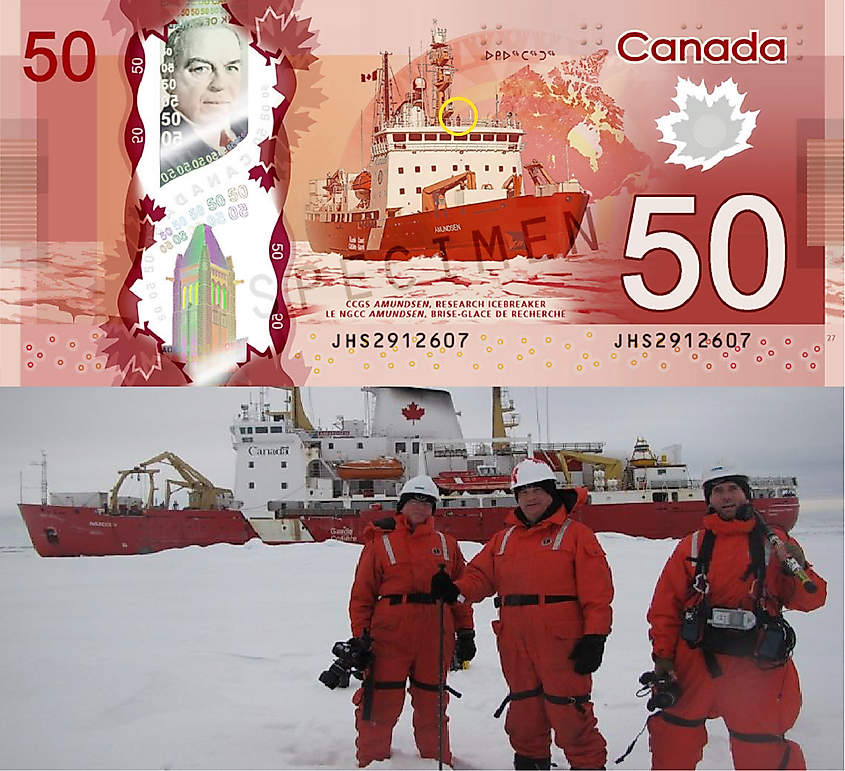
The back of the Canadian 50-dollar bill features the CCGS Amundsen, a Canadian Coast Guard Research icebreaker. Mark Terry, a professor at York University in Toronto and Wilfrid Laurier University in Waterloo, Ontario, is also a Canadian polar explorer and can be seen standing on the top deck of the icebreaker—see image above; he is the only living person featured on Canadian money. This image immortalizes Canada's dedication to Arctic research and exploration. In addition to textured printing, this design includes a unique tactile feature resembling Braille dots, allowing blind individuals to identify the denomination with ease.
Sir Robert Borden - 100 Dollar Bill
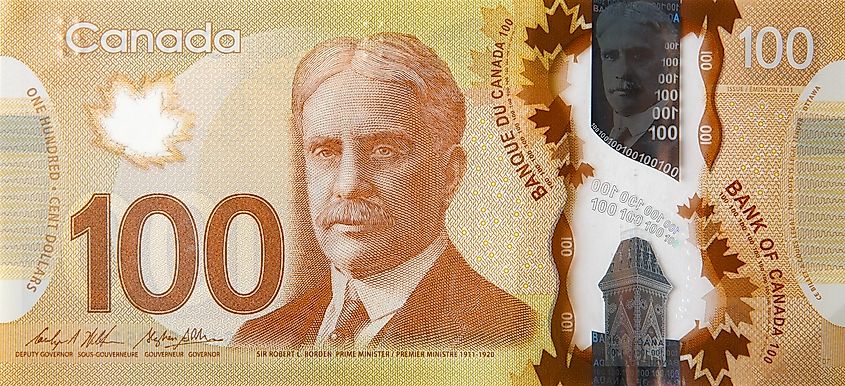
Sir Robert Laird Borden was born in Grand Pré, Nova Scotia in 1854. Borden was born to poor parents, and his family struggled to make ends meet throughout much of his childhood. This rough upbringing did not dissuade Bordern, as he would go on to get a decent education that would set him up for politics.
After a few years as an educator, Borden climbed to the top of a respected law firm in Halifax in 1890. In 1896, his close friend and political bigwig Charles Tupper convinced Borden to try his hand at a political career. Borden did not enjoy the public aspect of politics but saw the position as a member of parliament as a part of his civic duty. Generally quiet and reserved, Borden positioned himself as a stern, fair, god-fearing man who would guide Canada into the new century.
Borden was elected to public office in 1896 and soon rose through the ranks of the Conservative Party. By 1911, as Wilfred Laurier's government was starting to fade, Borden was able to force an election and managed to come out on top. While this was seen as a stunning victory by Borden and the Conservatives, his time in office would be far from easy.
In 1914, at the outbreak of the First World War, Canada was dragged into the conflict on behalf of the British Empire. Canada, at the time, was still very much a British colony and had no control over its foreign affairs. Since Britain had declared war on Germany, it meant that Canada had as well.
The First World War was a defining moment for Canada. The war was both devastating and divisive but also served as a source of unity and national pride. Canadian soldiers performed exceptionally well during the conflict, and the nation was able to pull together as one against a single external threat. However, it is unlikely that Canada would have done as well as it did if it were not for Borden's excellent leadership. Borden's management of the home front was nothing short of masterful as he was able to appease both the pro and anti-war factions in parliament while maintaining a steady flow of troops and supplies to the Western Front in Europe. The outcome of the war not only changed the Canadian identity but also proved to Britain that Canada was more than ready to become its own nation.
Coins
Penny
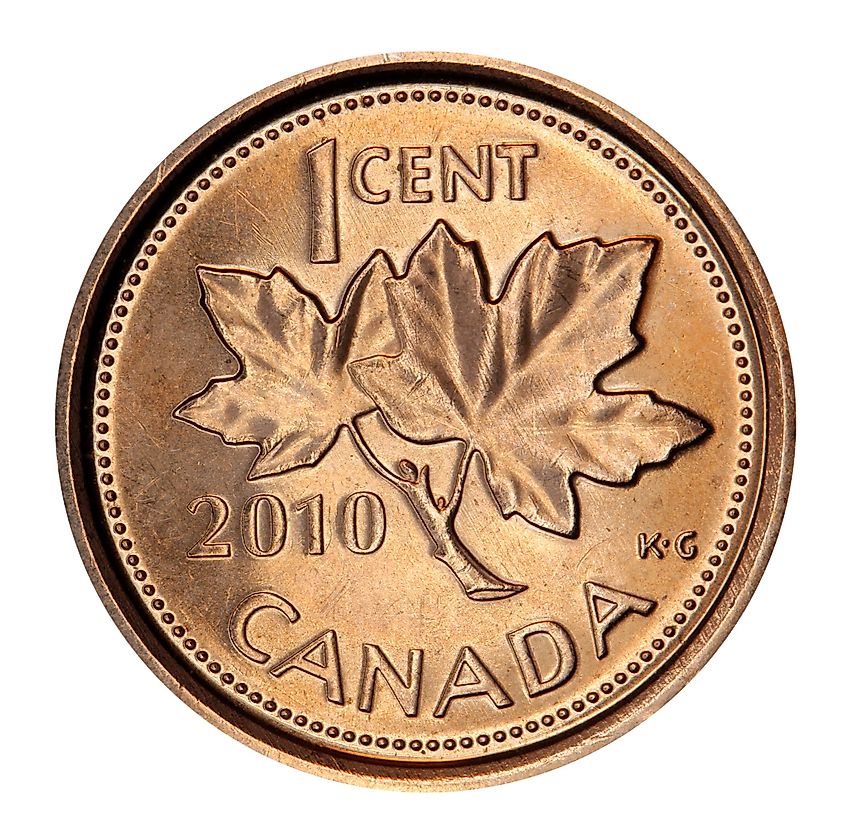
Canada no longer makes pennies after they were discontinued a little over ten years ago in February 2013. Holding a value of just one cent, the penny was deemed irrelevant as it no longer held any meaningful worth in day-to-day transactions.
While the penny was still in circulation, it presented an image of a maple leaf with Queen Elizabeth II on the back. The maple leaf is, of course, one of the most iconic symbols of Canada and can be seen on the flag itself.
Nickel
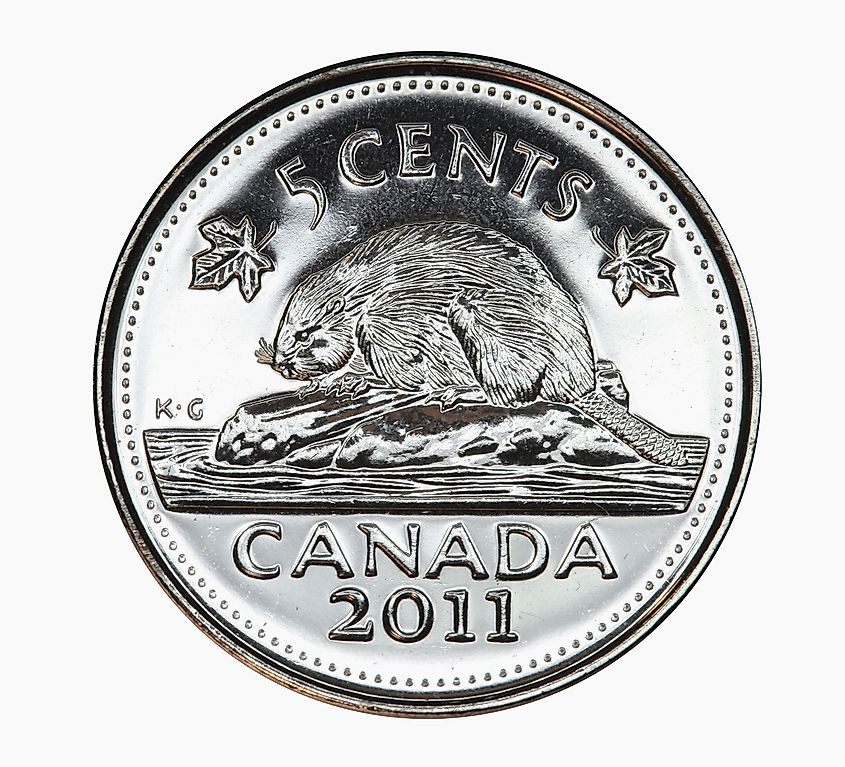
The Canadian nickel is worth 5 cents and sports the image of a beaver on one side and, like always, the British monarch on the other. The beaver has long been Canada's national animal and remains a symbol of the nation.
The reason the beaver is celebrated in Canada is due to its long colonial past. In the early days of European settlement, French and English colonists would venture deep into the vast Canadian wilderness in search of beavers. For a time, their pelts were some of the most sought-after in the world.
In the 17th and 18th centuries, the inclusion of beaver fur in one's wardrobe was considered to be the pinnacle of high fashion and doubled as a not-so-subtle public display of wealth. The pursuit of these animals and their pelts is what often drove early colonial settlement, which would eventually lay the groundwork for the nation-state of Canada.
Dime
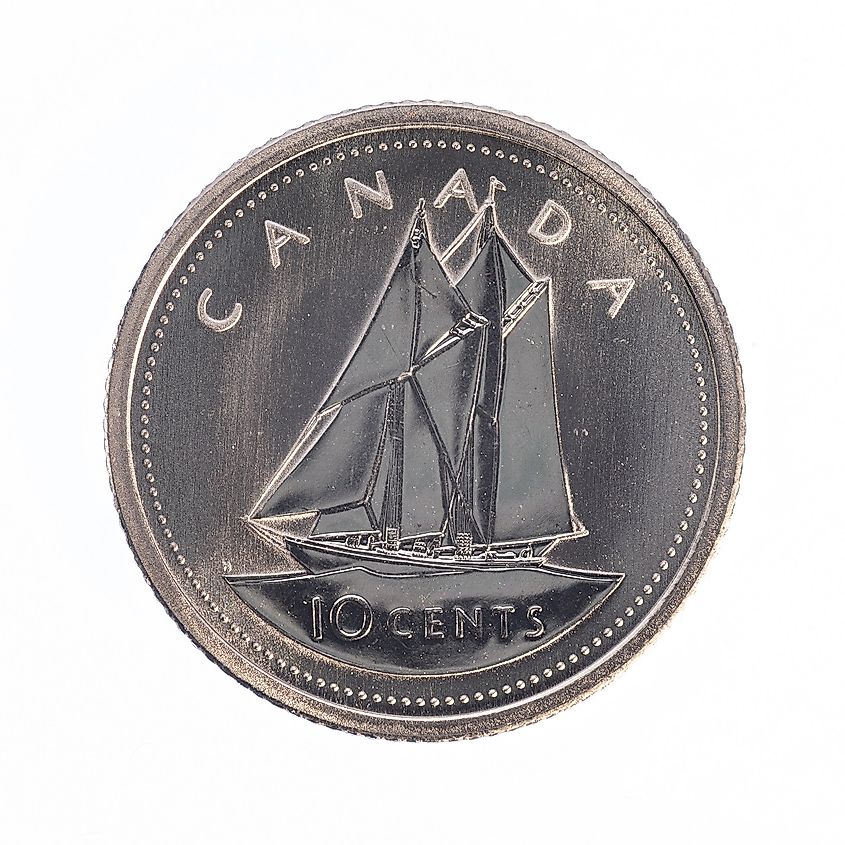
Holding a value of 10 cents, the dime in Canada displays the famous schooner named the Bluenose. This boat was a top-of-the-line piece of technology in its day and won four separate International Fishermen’s Cups. This cup was meant to be a departure from the more 'high society" style of yacht racing and was meant to introduce working-class, blue-collar fishing vessels into these kinds of competitions.
The success of the Bluenose not only proved the skill of Canadian fishermen and sailors but it also served as a mascot for the working class. To this day, Canada still boasts a proud maritime tradition that can be found on both the east and west coasts.
Quarter
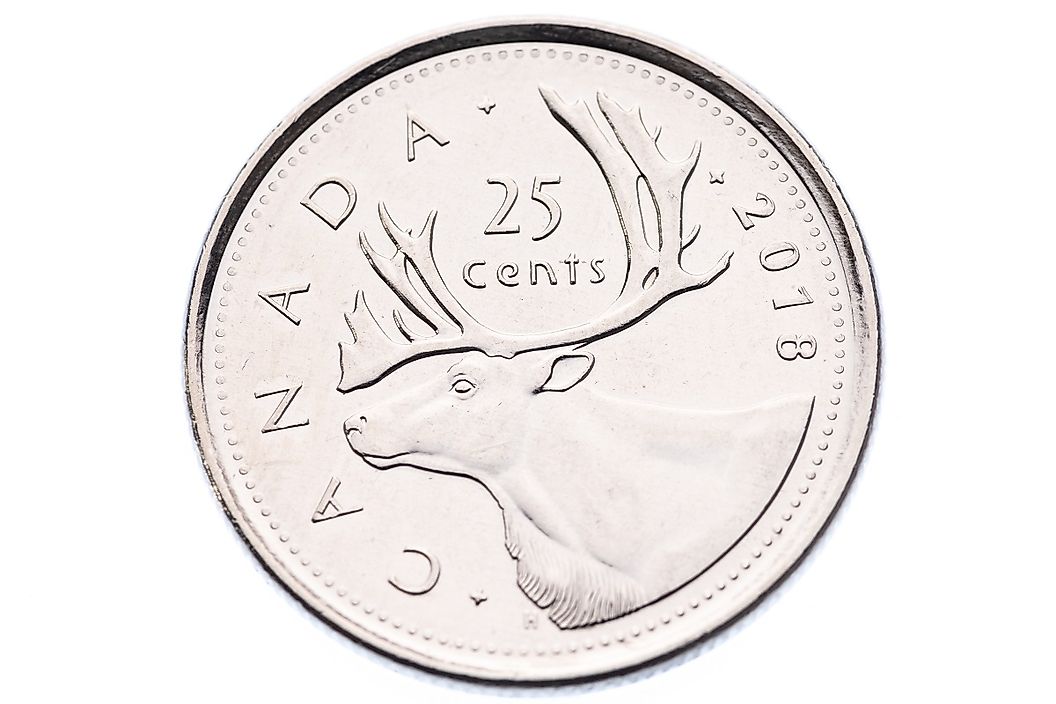
The sure sign of the Canadian 25-cent piece, also known as a quarter, is the caribou. These enormous animals inhabit much of Canada's vast northern wilderness and travel in large herds numbering in the thousands.
The quarter does not always have a caribou on it, as there have been countless examples of special quarters being made to commemorate significant cultural events, such as the 2010 Vancouver Winter Olympics or the 150th celebration of confederation in 2017.
Sadly, these magnificent animals have suffered a significant population decline in the last decade, and some species of Caribou are facing extinction. Significant measures are being taken by both provincial and federal governments to try and stem the rapid decline of the Caribou population, but it is yet to be seen if this will be effective.
Loonie
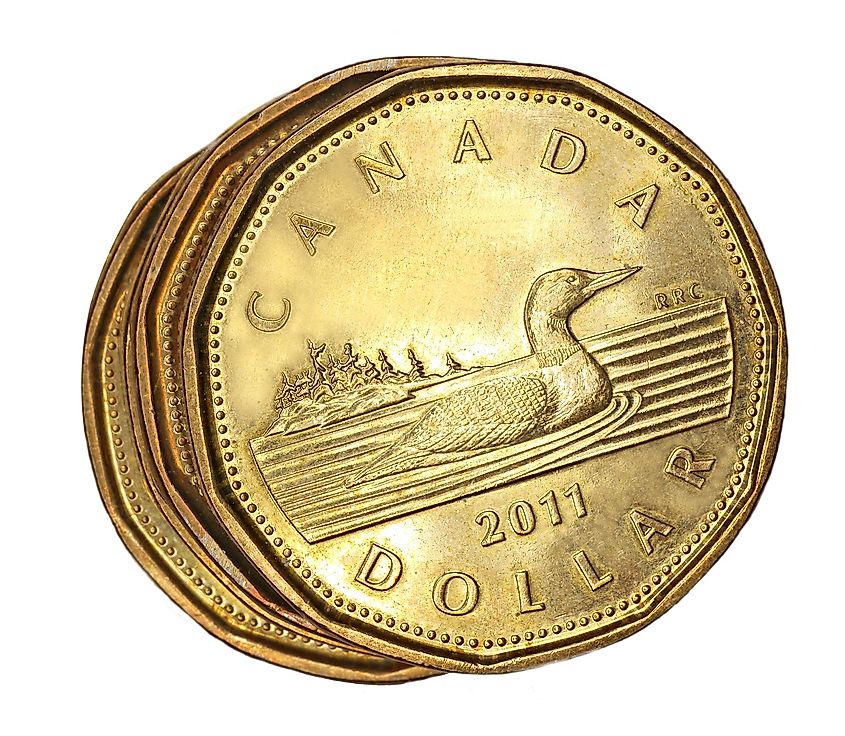
Equaling one Canadian dollar, the term Loonie was originally a slang term that was given to them by Canadians because of the loon that is displayed on the side of it. The name stuck almost immediately. First introduced in 1987 as a replacement for the one dollar bill, the Loonie had mixed reception at first but was later embraced as it was found to be much more convenient than holding on to multiple paper bills.
The loon on the one-dollar coin is meant to represent the beautiful Candian landscape and the nation's inseparable ties to nature and its conservation.
Toonie
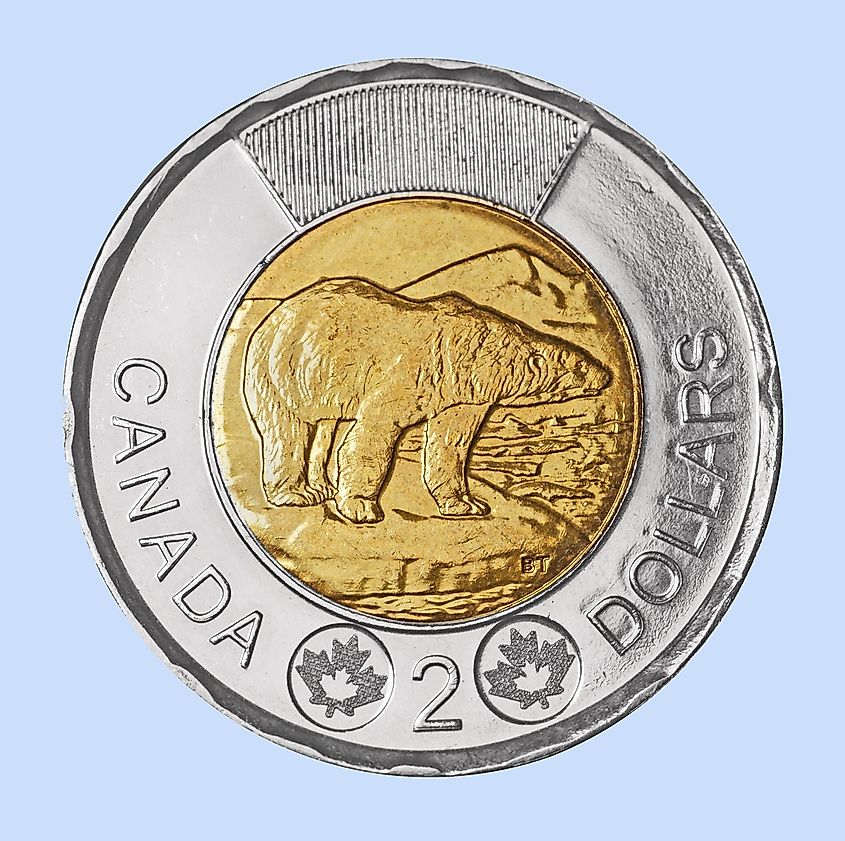
Nine years after the introduction of the loonie, the Canadian Mint unveiled its two-dollar coin in 1996, which was creatively named the toonie almost as soon as it was rolled out the door.
The two-dollar coin can be seen with two polar bears on the side with a decorative gold center and a silver river around the edge. The polar bears are meant as a symbol of the Canadian Arctic and all of the astounding animals and wildlife that live in such a stunning yet inhospitable place.
50-Cent
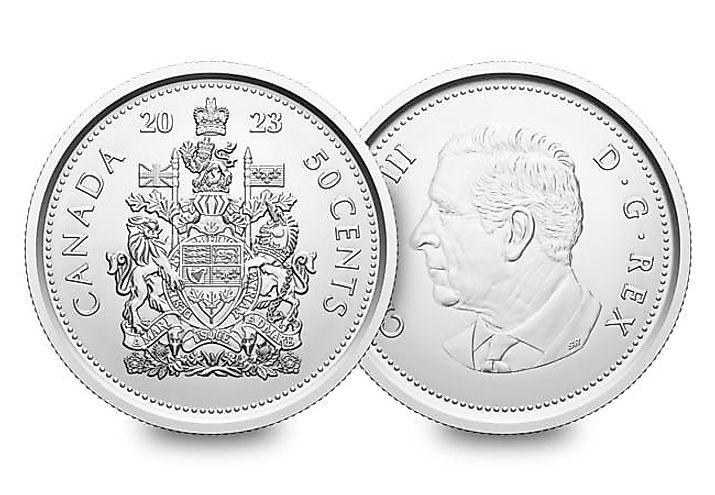
The 2023 Canadian 50-cent coin features the first depiction of King Charles III on Canadian currency, marking a significant transition from the effigies of Queen Elizabeth II. This new design, introduced in various special coin sets, such as the Special Wrap Roll and the Classic Uncirculated Coin Set, symbolizes the commencement of King Charles III's reign on Canadian coinage. Prior to this, Queen Elizabeth II's portrait was a longstanding feature on Canadian coins, embodying a historic era that spanned over seven decades.
As it stands, there are no new plans to change any of the faces or people that we see currently on the Canadian money aside from Queen Elizabeth II. On average, there are a new series of bills put into circulation every few decades or so.
The current line of bills that are now most common were released in 2011. What made these so significant was not the faces on them but rather what they were made out of. Moving away from cotton fiber, the 2011 generation of bills is made out of synthetic polymer.
This new material makes them considerably more resistant to damage. Both waterproof and harder to tear, the new family of plastic bills was primarily introduced as a way to help combat counterfeiting.











